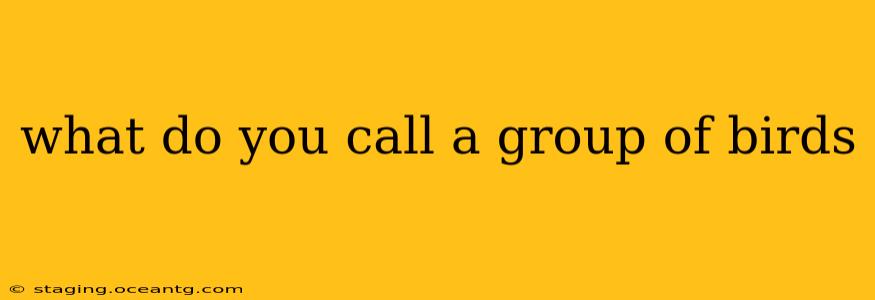What Do You Call a Group of Birds? A Comprehensive Guide to Bird Collective Nouns
The answer to "what do you call a group of birds?" isn't a simple one! There isn't just one single term, as the name for a group of birds depends on the type of bird. This fascinating aspect of the English language reflects the rich history of ornithology and our long-standing relationship with avian life. We'll explore the various collective nouns used for different bird gatherings, as well as the reasons behind their varied descriptions.
What are Collective Nouns?
Before diving into specific bird groups, let's define what a collective noun is. A collective noun is a word that names a group of things considered as a single unit. Examples beyond birds include a "pride" of lions, a "school" of fish, or a "flock" of sheep. The term used often reflects the behavior, appearance, or social structure of the group.
Common Collective Nouns for Birds
While "flock" is the most commonly used collective noun for birds, it's not universally applicable. Here are some examples for specific types of birds:
-
Flock: This is the most general and widely used term. It applies to many different types of birds, especially smaller, less structured groups. Think of sparrows, starlings, or pigeons.
-
Murder: This rather ominous-sounding term is used for a group of crows. It's believed to have originated from the birds' perceived aggressive nature and their large, noisy gatherings.
-
Parliament: A group of owls is called a parliament. This reflects the owl's perceived wisdom and the solemnity of their nocturnal gatherings.
-
Business: A group of choughs is known as a business. The reason for this specific term remains debated, but it might relate to their organized foraging and social behavior.
-
Convocation: A group of eagles is sometimes referred to as a convocation, possibly referring to their majestic gatherings.
-
Exaltation: This less common term refers to a group of larks. The term suggests the uplifting, joyful nature of their songs.
-
Kaleidoscope: This vibrant term is used to describe a large, colourful gathering of butterflies. Though not strictly birds, it showcases the creative range of collective nouns.
Why Are There Different Collective Nouns for Birds?
The diversity of collective nouns for birds reflects a rich history of observation and interpretation. People have long observed birds, noting their behaviors, social structures, and even their perceived character traits. The collective nouns chosen often mirror these observations, adding a layer of descriptive richness to the language.
What is the most common collective noun for birds?
As mentioned earlier, flock is the most common collective noun used to describe a group of birds. This term is widely understood and used regardless of the specific species.
Are there any collective nouns for specific types of birds that are less commonly known?
Yes, many collective nouns are less commonly known. For example, a group of starlings might be referred to as a murmuration, highlighting their mesmerizing aerial displays. Similarly, a group of cranes may be called a sedge. The specific term often depends on the regional dialect or cultural context.
What makes a collective noun for birds different from other animals?
While many animals have unique collective nouns, birds' collective nouns often reflect their social behavior and perceived characteristics more prominently than those of other animals. This nuanced approach highlights the long history of human observation and interpretation of birdlife.
By understanding the context and history behind these diverse terms, we gain a deeper appreciation for the beauty and complexity of both the avian world and the English language itself. So, the next time you observe a group of birds, consider the rich vocabulary available to describe their collective presence.
